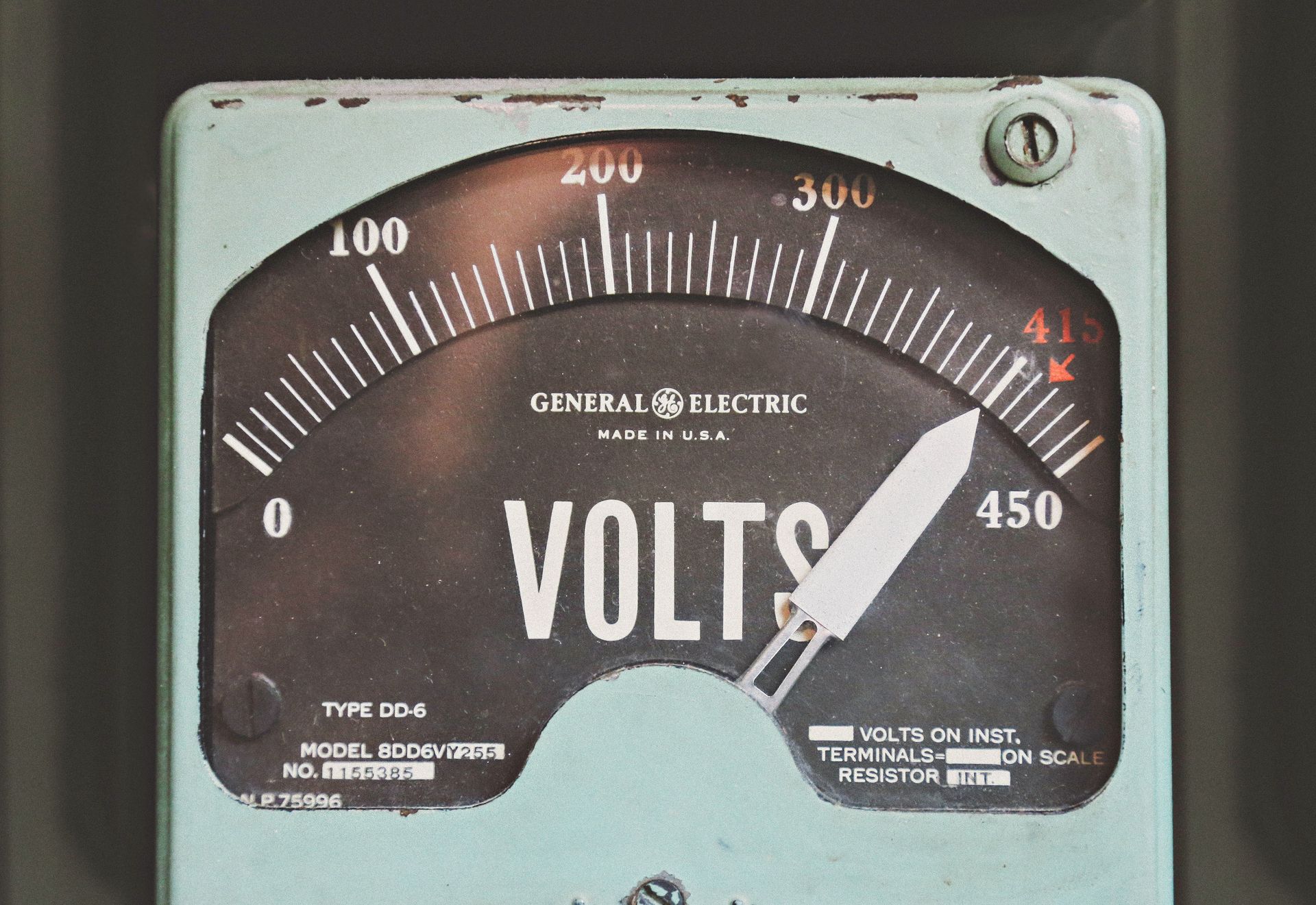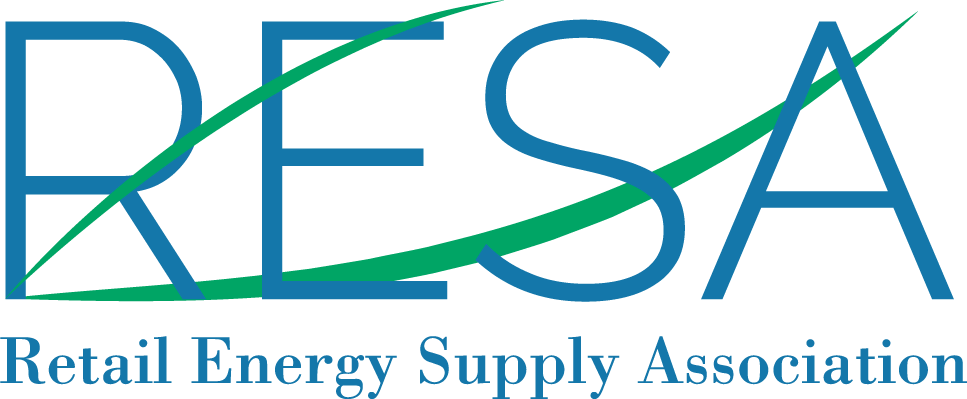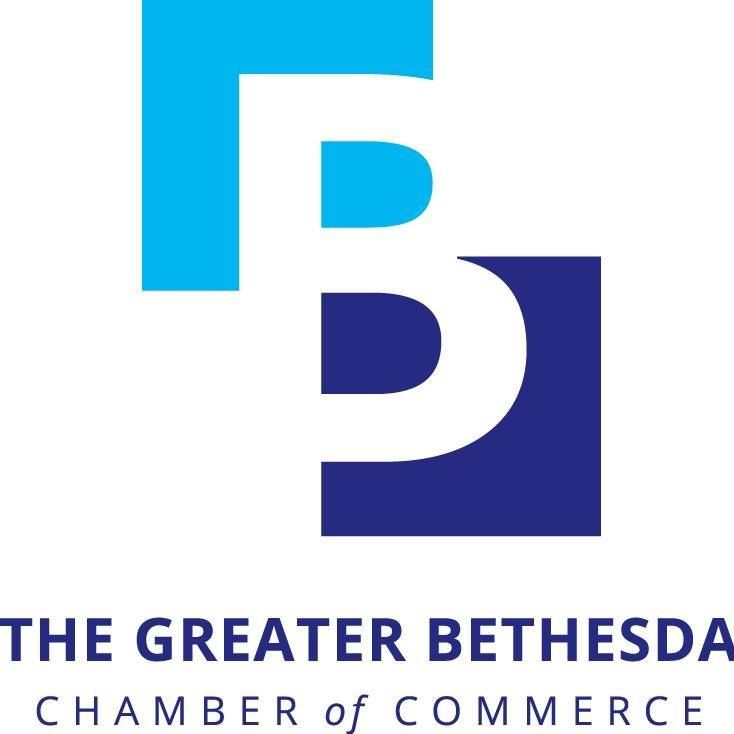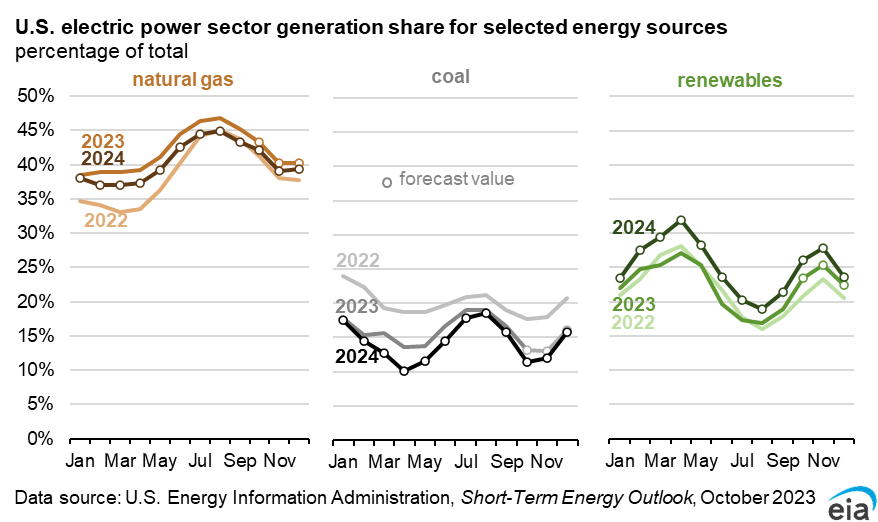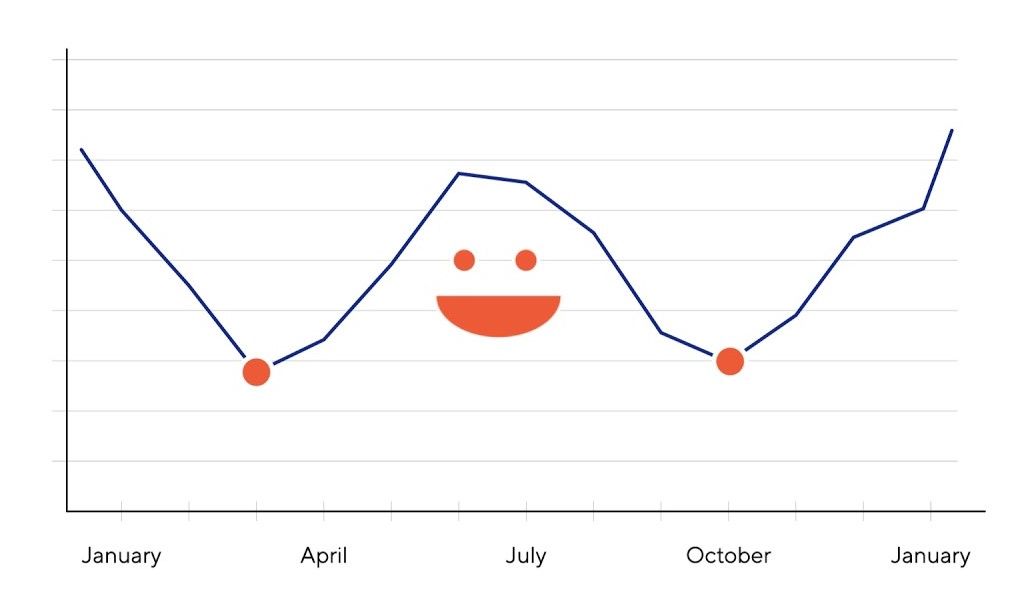Helpful Industry Terms
A
-
Adjustment Bid
A bid that is used by the Independent System Operator (ISO) to adjust supply or demand when it is anticipating congestion on the transmission system.
-
Aggregator
Any marketer, broker, public agency, city, county, or special district that combines the loads of multiple end-use customers to facilitate energy purchasing plans other services on behalf of these customers.
-
Ancillary Services
Necessary services that must be provided in the generation and delivery of electricity. As defined by the Federal Energy Regulatory Commission (FERC), these services include: coordination and scheduling services (load following, energy imbalance service, control of transmission congestion); automatic generation control (load frequency control and the economic dispatch of plants); contractual agreements (loss compensation service); and support of system integrity and security.
B
-
Baseload
The minimum amount of electric power delivered or required over a given period of time at a steady rate.
-
Baseload capacity
The generating equipment normally used to serve loads on an around-the-clock basis.
-
Baseload plant
A plant, typically comprised of high-efficiency steam-electric units, that normally generates all or part of the minimum load requirements of a system and that produces electricity at a constant rate. These units maximize system mechanical and thermal efficiency while minimizing system-operating costs.
-
Broker
An entity that arranges the sale and purchase of energy, transmission and other services between buyers and sellers but does not take title to any of the power sold.
-
Burnertip
The generating equipment normally used to serve loads on an around-the-clock basis.
-
Bundled utility service
All generation, transmission, and distribution services- including ancillary and retail services- provided by one entity for a single charge.
C
-
Capability
The maximum load that a generating unit, generating station or other electrical apparatus can carry under specified conditions for a period of time without exceeding approved limits of temperature and stress.
-
Capacity
The amount of electric power a generation unit is capable of producing and/or the amount of electric power a system requires.
-
Capacity charges
Independent system operators (ISOs) or regional transmission organizations (RTOs) make payments to power generators for their available capacity-independent of the cost of energy they produce. These payments provide an incentive for generators to locate in a particular market and they are intended to guarantee that there will be sufficient generation to meet the maximum energy requirements of the market at all times.
-
Citygate
A reference point for measuring and billing natural gas supply. If you are being served by a retail supplier for your natural gas, and your agreement specifies that your gas is billed at the citygate, you will be billed by you local distribution company for fuel charges.
-
Co-generator
A generating facility that produces electricity and other forms of useful thermal energy (such as heat of steam) that can be used for industrial, commercial, heating, or cooling purposes. To receive status as a qualifying facility under the Public Utility Regulatory Policy Act, a facility must produce electric energy and “another form of useful thermal energy through the sequential use of energy”, and meet certain ownership, operating, and efficiency criteria established by the Federal Energy regulatory Commission.
-
Combined cycle
An electric generating technology in which electricity is produced from otherwise lost waste heat exiting from one or more gas (combustion) turbines. The exiting heat is routed to a conventional boiler or to a heat recovery steam generator for utilization by a steam turbine in the production of electricity. This process increases the efficiency of the electric generating unit.
-
Commercial sector
Generally defined as non-manufacturing business establishments, including hotels, motels, restaurants, wholesale business, and retail stores, as well as health, social and educational institutions. Utilities may classify their commercial service/rates as “all consumers whose demand or annual usage exceeds some specified limit.” The limit may be set by the utility based on their rate schedule.
-
Competitive transition charge
A non-bypassable charge levied on each customer of a distribution utility-including those who are served under contracts with non-utility suppliers- for recovery of a utility’s transition costs.
-
Combined pumped-storage plant
A pumped-storage hydroelectric power plant uses two reservoirs, with one located at a much higher elevation than the other. During off-peak electricity periods, energy is stored by reversing the turbines and pumping water from the lower to the upper reservoir. The stored water can later be released to turn the turbines and generate electricity as it flows back into the lower reservoir.
-
Congestion
A situation that arises when requests for power transfers across a transmission facility exceed the transfer capability of the facility.
-
Convergence bidding
A method whereby market participants can make financial sales on purchases of energy in the day-ahead market, with the explicit requirement to buy back or sell back that energy in the real-time market, thereby arbitraging the expected difference between day-ahead and real-time prices. Arbitrage: the simultaneous purchase and sale of the same securities, commodities, or foreign exchange in different markets to profit from unequal prices.
-
Cost-of-service regulation
Traditional electric utility regulation under which a utility is allowed to set rates based on the cost of providing service to customers and the right to earn a limited profit.
-
Customer choice
The concept that follows the deregulation of an energy market, which allows consumers in that market to purchase electricity from competitive suppliers-rather than being required to take supply service from the local utility. Also called “retail choice” or “direct access” in some regions.
-
Customer charge (service charge)
A regulated charge that is part of the utility’s monthly distribution charge. It covers the basic administrative activities associated with maintaining a customer account, including billing, meter reading equipment, service line maintenance, and equipment.
D
-
Day-ahead market
The hourly forward market in which market participants may submit offers to sell and bids to buy electricity for the next day.
-
Day-ahead schedule
A schedule prepared by a scheduling coordinator or the independent system operator before the beginning of a trading day. The schedule indicates the levels of generation and demand scheduled for each settlement period that trading day.
-
Demand
The energy requirements of a particular customer or area at a particular moment in time.
-
Deregulation
The process of replacing a monopoly system of electric utilities with competing sellers, allowing individual retail customers to choose their electricity supplier, while still receiving delivery over the power lines owned by the local utility. It includes the reconfiguration of the vertically integrated electric utility.
-
Direct access
The ability of a retail customer to purchase electricity supply from a retail supplier, rather than through a local distribution utility; another name for “customer choice” or “retail choice” in certain regions.
-
Demand-side management
The planning, implementation and monitoring of utility activities designed to encourage consumers to modify patterns of electricity usage, including the timing and level of electricity demand. It refers only to energy and load-shape changes arising from the normal operation of the marketplace or from government mandated energy-efficiency standards.
-
Distribution
The delivery of electricity to retail customers, including homes, businesses, etc.
-
Distribution charges
Regulated, non-bypassable charges that cover the costs of using the local wires, transformers, substations, and other equipment to delivery electricity from the electric distribution company to a home or business.
-
Divestiture
the stripping of one utility function from the others by selling (spinning-off), or in some other way changing the ownership of, the assets related to that function, Divestiture is most commonly associated with spinning-off the generation assets so that they’re no longer owned by the same shareholders that own the transmission and distribution assets.
E
-
Electric service provider
An entity that provides electric supply to a retail or end-use customer.
-
Electric utility
A corporation, person, agency, authority, or other legal entity that owns and/or operates facilities within the United States that generate, transmit, distribute, or sell electricity to the public.
F
-
Forced outage
When a generating unit, transmission line or other facility shuts down for emergency reasons or a condition in which the generating equipment is unavailable for load due to unanticipated breakdown.
-
Futures market
A trade center for quoting prices on contracts for the delivery of a specified quantity of a commodity at a specified time and place in the future. The futures market is a standardized, exchange-traded and government-regulated hedging mechanism.
-
Fossil fuel
Any naturally occurring organic fuel, such as petroleum, coal, and natural gas. A fossil fuel electricity plant uses coal, petroleum, or gas as its source of energy.
-
Fuel charges
Fuel charges, which are part of natural gas supply service, cover the fuel that is lost through the pipeline between the local distribution company citygate and the point of delivery (business or residence).
-
Federal Energy Regulatory Commission (FERC)
An independent agency within the department of energy that regulates the interstate transmission of electricity, natural gas and oil. FERC has jurisdiction over interstate electricity sales, wholesale electric rates, hydroelectric licensing, natural gas pricing, oil pipeline rates and gas pipeline certification.
G
-
Gas turbine plant
An electric generation plant in which the prime mover is a gas turbine.
-
Generating unit
Any combination of physically connected generators, reactors, boilers, combustion turbines, or other prime movers operating together to produce electric power.
-
Generation (electricity)
The process of producing electric energy by transforming other forms of energy.
-
Generation company
A regulated or non-regulated entity(depending on the industry structure) that operates and maintains existing generating plants.
-
Generator
A machine that converts mechanical energy into electrical energy.
-
Geothermal plant
A plant in which the prime mover is a steam turbine. The turbine is driven either by steam produced from hot water or by natural steam that derives its energy from heat found in rocks or fluids at various depths beneath the surface of the earth.
-
Greenhouse effect
The increasing mean global surface temperate of the earth caused by gases in the atmosphere, including carbon dioxide, methane, nitrous oxide, ozone, and chlorofluorocarbons (also known as green house gases, or GHGs). These gases trap radiant energy within the lower levels of the atmosphere, which would normally escape into space, and subsequently re-radiate some of the energy back to earth, increasing the earth’s surface temperature.
-
Grid
The layout of an electrical distribution system.
H
-
Heat rate
A measure of generating station thermal efficiency that is generally expressed in British Thermal Units (BTU) per net kilowatt hour (kWh). It is computed by dividing the total BTU content of fuel burned for electricity generation by the resulting net kilowatt hour generation.
-
Hedging contracts
Contracts that establish future pricing and quantities of electricity, independent of the short-term market.
-
Henry Hub
A pipeline hub on the Louisiana Gulf Coast. It is the delivery point for the natural gas futures contracts on the New York Mercantile Exchange (NYMEX).
-
Hydroelectric plant
A plan in which the turbine generators are driven by falling water.
I
-
Independent power producers
Non-utility power producers in the United States. These facilities are wholesale electricity producers that operate within the franchised service territories of host utilities and are usually authorized to sell at market-based rates. Unlike traditional electric utilities, independent power producers do not possess transmission facilities or sell electricity in the retail market.
-
Independent system operators (ISOs)
Independent, federally regulated entities that coordinate regional transmission in a non-discriminatory manner and ensure the safety and reliability of the electric systems in their regions.
-
Intermediate load
The load range in electricity generation that is from baseload to a point between baseload and peak. This point may be the mid-point, a percent of the peak load, or the load over a specified time period.
-
Internal combustion plant
A plant in which the prime mover is an internal combustion engine. An internal combustion engine has one or more cylinders in which the process of combustion takes place, converting energy released from the rapid burning of a fuel-air mixture into mechanical energy. These types of plants, which are mainly powered by diesel or gas-fired engines, usually operated during periods of high electricity demand.
-
Interruptible load
Refers to program activities that, in accordance with contractual arrangements, can interrupt consumer load (typically commercial and industrial consumers) at times of seasonal peak load. In some instances, the load reduction may be affected by direct action of the system operator (remote tripping) after notice to the consumer in accordance with contractual provisions. For example, loads that can be interrupted to fulfill planning or operation reserve requirements would be reported as interruptible load.
-
Investor-owned utility (IOU)
A class of utility whose stock is publicly traded and who is organized as a tax-paying business – usually financed by the ale of securities in the capital market. It is regulated and authorized to achieve an allowed rate of return.
L
-
Line loss
Refers to the volume of electricity that is lost in the system as electricity travels from source to load. The greater the distance, the greater the loss of electricity. Congestion and line losses cause the actual cost of delivering electricity to vary at various locations on the grid.
-
Load
The amount of electric power delivered or required at any specific point or points on a system.
-
Locational marginal pricing
The cost to serve the next megawatt of load at a specific location, using the lowest production cost of all available generation, while observing all transmission limits. LMP provides price signals that account for the additional costs of electricity caused by transmission congestion and line loss at various points on the electricity grid. LMPs, which are employed by PJM, New England and California Independent System Operator (ISO) territories, help to efficiently determine the interaction of energy supply and energy demand. Congestion and line loss cause the actual cost of delivering electricity to vary at various locations on the grid.
-
Load shape
A method of describing peak load demand and the relationship between power supplied and the time of use. On typical chart, load shape is plotted as: X axis equals time and Y axis equals usage.
M
-
Market-based pricing
Electricity supply prices that are determined in the open market.
-
Market clearing price
The price at which supply equals demand for the day-ahead and/or hour-ahead markets.
-
Metering charge
Part of the monthly distribution charge (regulated) that covers the costs of maintaining and reading the meter equipment.
N
-
Non-bypassable charges
Any of several types of charges applied to all customer bills in a particular region. Non-bypassable charges are regulated charges, typically, set by a tariff, that are determined by your local utility and may be billed by either the utility or your supplier. Examples of these charges include: transition charges, access charges, regional levies and taxes, among others.
-
Non-utility power producer
A corporation, person, agency, authority, or other legal entity that owns electric generating capacity and is not an electric utility. Non-utility power producers include qualifying co-generators, qualifying small power producers, and other non-utility generators (including independent power producers) without a designated franchised service area.
-
Nuclear power plant
A facility in which heat produced in a reactor by the fissioning of nuclear fuel is used to drive a steam engine.
O
-
Off-peak
A period of relatively low system demand that can occur in daily, weekly, and seasonal patterns, and that can differ for each individual electric utility or independent system operator.
-
On-peak
A period of relatively high system demand that can occur in daily, weekly, and seasonal patterns, and that can differ for each individual electric utility or independent system operator.
-
Open access
A regulatory mandate to allow others to use a utility’s transmission and distribution facilities to move bulk power from one point to another on a non-discriminatory basis for a cost-based fee. Open access prevents a utility, which owns or controls a region’s transmission and distribution systems, from also controlling the energy supply.
-
Outage
The period in which a generating unit, transmission line, or other facility is out of service.
P
-
Peak demand
The maximum load during a specified period of time.
-
Peak load
The amount of power required to supply customers at times when the need is the greatest.
-
Peak load plant
A plant usually housing old, low-efficiency steam units, gas turbines, diesel, or pumped-storage hydroelectric equipment, that is normally used during the peak-load periods.
-
Peaking capacity
Capacity of generating equipment normally reserved for operation during the hours of highest daily, weekly, or seasonal loads. Some generating equipment may be operated at certain times as peaking capacity and at other times to serve loads on an around-the-clock basis.
-
Petroleum (crude oil)
A naturally occurring, oily, flammable liquid composed primarily of hydrocarbons. Crude oil is occasionally found in springs or pools, but is usually drilled from wells beneath the earths surface.
-
Plant
A facility that houses prime movers, electric generators, and auxiliary equipment for converting mechanical, chemical, and/or nuclear energy into electric energy. A plant may contain more than one type of prime mover.
-
Power
The rate at which energy is transferred. Electrical energy is usually measured in watts.
-
Power exchange
The entity that establishes a competitive spot market for electric power through a day and/or hour-ahead auction of generation and demand bids.
-
Power Marketers
Business entities engaged in buying, selling, and marketing electricity. Power marketers do not usually own generating or transmission facilities however, unlike brokers, they take ownership of the electricity and are involved in interstate trade. These entities file with the Federal Energy Regulatory Commission for status as a power marketer.
-
Pumped-storage hydroelectric plant
A plant that usually generates electric energy during peak load periods by using water previously pumped into an elevated storage reservoir during off-peak periods, when excess generating capacity was available to do so. When additional generating capacity is needed, the water can be released from the reservoir through a conduit to turbine generators located in a power plant at a lower level.
-
PURPA
The Public Utilities Regulatory Policies Act of 1978. It required states to implement utility conservation programs and create special markets for co-generators and small producers who meet certain standards, including the requirement that states set the prices and quantities of power the utilities must buy from such facilities.
R
-
Regulation
The governmental function of controlling or directing economic entities through the process of rulemaking and adjudication.
-
Reliability
Electric system reliability has two components- adequacy and security. Adequacy is the ability of the electric system to supply the aggregate electrical demand and energy requirements of customers at all times, taking in to account scheduled and un-scheduled outages of system facilities. Security is the ability of the electric system to withstand sudden disturbances, such as electric short circuits or unanticipated loss of system facilities. The degree of reliability may be measured by the frequency, duration, and magnitude of adverse effects on consumer services.
-
Renewable Energy Credits or Certificates (RECs)
Tradable environmental commodities in the United States that represent proof that one megawatt hour or 1,000 kWh of electricity was generated from an eligible renewable energy resource- such as wind, solar, low impact hydro, biomass, biodiesel, or geothermal power- and delivered somewhere onto a power grid. Consumers may purchase RECs to offset the environmental impact associated with the energy they use that comes from conventional sources. Each REC is given an identification number from a certification organization and can only be used/counted once.
-
Renewable portfolio standards
Regulations that require the increased production of energy from renewable energy sources such as wind, solar, biomass, and geothermal. RPS generally require that an electricity supplier’s total source energy, also referred to as it’s “portfolio”, must consist of a certain percentage that is sourced from renewable fuels, preferably nonpolluting source energy such as wind and solar. RPS vary from state to state (some have them, some don’t) since national RPS have not yet been set.
-
Renewable resources
Naturally occurring but flow-limited resources that can be replenished. They are virtually inexhaustible in duration but limited in the amount of energy that is available per unit of time.
-
Reregulation
When new or additional regulations are enacted after an industry or sector is deregulated. The process of reversing deregulation.
-
Reserve margin
A measure of available capacity over and above the capacity needed to meet normal peak demand levels. For energy producers, it’s the ability to generate more energy that the system normally requires.
-
Reregulation
The process of replacing a monopoly system of electric utilities with competing sellers, allowing individual retail customers to choose their electricity supplier and still receive delivery over the power lines owned by the local utility. It includes the reconfiguration of the vertically-integrated electric utilities so that they no longer control all aspects of electric power service.
-
Retail competition
The ability to have multiple entities selling electric power directly to end use customers. A market environment in which customers can choose their suppliers and suppliers can choose to whom they wish to offer their services and how much they wish to charge.
S
-
Scheduling coordinators
Entities certified by the Federal Energy Regulatory Commission that act as a go-between with the Independent System Operator (ISO) on behalf of generators, supply aggregators (wholesale marketers), retailers, and customers to schedule the distribution of electricity.
-
Scheduled outage
When a generating unit, transmission line, or other facility, must be shut down for a scheduled inspection or maintenance.
-
Spot market
The hourly electricity market where prices can change from hour to hour and based on the time of day, supply, demand, trading places, etc.
-
Steam-electric plant
A plant in which the prime mover is a steam turbine. The steam used to drive the turbine is produced in a boiler where fossil fuels are burned.
-
Stranded benefits
Benefits associated with regulated retail electric service that may be at risk under retail competition. Examples of this are conservation programs, fuel diversity, reliability of supply, and tax revenues based on utility revenues.
-
Stranded costs
Costs incurred by a utility that may not be recoverable under retail competition. Examples include underappreciated generating facilities, deferred costs and long-term contract costs.
-
Substation
Facility equipment that switches, changes, or regulates electric voltage.
-
Sustainable energy
Energy produced from renewable resources, including biofuels, solar, wind, wave, geothermal, and tidal powers.
-
System benefit fund
A regulated charge that goes toward customer education programs, programs to assist low-income electric customers, and the property tax replacement mechanism.
T
-
Transformer
An electrical device for changing the voltage of an alternating current.
-
Transition charge
A regulated charge that goes toward recovering the costs of refinancing stranded costs, or utility debt, at lower interest rates, in order to cut the total cost of the debt.
-
Transmission charge
Part of the basic electric service charges that every customer must pay. These charges cover the cost to move the electricity from the generation facility over the transmission lines.
-
Transmission
The movement or transfer of electric energy over an interconnected group of lines and associated equipment from generation plants to the points at which it is transformed.
-
Transmission system
An interconnected group of electric transmission lines and associated equipment for moving or transferring electric energy in bulk between points of supply and points at which it is transformed for delivery over the distribution system lines to consumers, or other electric systems.
-
Transmission cost recovery factor
-
Transmission congestion
The situation that occurs when demand for energy exceeds the capacity of the transmission lines to transfer that energy. For example, when high demand from localized, highly-populated areas, or ‘load pockets’ constrain the capacity of transmission lines and cause bottlenecks in the grid. Congestion and line losses cause the actual cost of delivering electricity to vary at various locations on the grid.
-
Turbine
A machine for generating rotary mechanical power from the energy of a steam of fluid, such as water, steam, or hot gas. Turbines convert the kinetic energy of fluids to mechanical energy through the principles of impulse and reaction, or a mixture of the two.
U
-
Unbundling
The separation of the process of electric power service from generation to metering into its component parts for the purpose of offering or pricing services/service offerings separately. In deregulated regions, unbundling includes splitting the components of electric service- generation, transmission, and distribution- so that one entity (i.e. the utilities) does not own all three.
V
-
Vertical integration
An arrangement whereby the same company owns all of the different aspects of making, selling, and delivering a product or service. In the electric industry, it refers to the historically common arrangement whereby a utility would own its own generating plants, transmission system, and distribution lines to provide all aspects of electric service to customers.
W
-
Wholesale power market
The purchase and sale of electricity, along with the ancillary services needed to maintain reliability and power quality at the transmission level, from generators to resellers (who sell to retail customers).
-
Wire charges
A broad term that refers to charges levied on power suppliers or their customers for the use of the transmission or distribution wires.
Z
-
Zone
A point in the Independent System Operator-controlled grid where wholesale power pricing can be settled. These settlement points are region-specific and therefore the price settlements will vary based on the cost of congestion and losses.

All Rights Reserved
Stay Connected
We will get back to you as soon as possible.
Please try again later.

